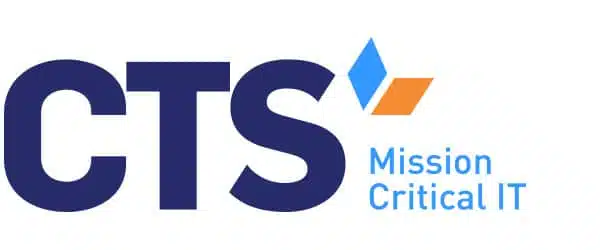Building out IT infrastructure for schools isn’t just about adding more computers or upgrading Wi-Fi. It’s about creating a technology ecosystem that supports students, teachers, and administrators, both now and in the long term.
With remote learning and cloud-based solutions in wide use, schools must ensure their IT environments are secure, scalable, and capable of delivering a seamless learning experience. But managing school IT infrastructure is no small task. Schools often face budget constraints, aging network equipment, and the challenge of securing sensitive information while keeping systems accessible for students and staff.
This is where Managed Service Providers (MSPs) can deliver guidance. Through their expertise, schools can optimize their IT environments, minimize security breaches, and ensure their technology investments pay off.
Key Components of a Strong School IT Infrastructure
Reliable Networking and Connectivity
A school’s network is its backbone. Without fast, secure, and reliable connectivity, the entire learning experience suffers. Whether students and teachers are accessing cloud services, streaming educational videos, or participating in remote learning, network infrastructure must support high demand without lag or downtime.
To build a strong school IT infrastructure, schools need:
- Enterprise-grade network equipment that can handle high-traffic learning environments.
- Wi-Fi solutions designed for high-density use in classrooms, auditoriums, and outdoor spaces.
- Bandwidth optimization to ensure critical educational applications aren’t competing with non-essential traffic.
- Network segmentation to keep student traffic separate from administrative staff and sensitive information.
Cloud-Based and On-Premise Solutions
The debate between cloud-based and on-premise solutions in education isn’t about choosing one over the other; it’s about balance. Schools need infrastructure that is flexible, cost-effective, and secure, which often means a hybrid approach.
- Cloud services provide scalability, enabling schools to expand storage and computing power without hefty hardware investments.
- On-premise solutions give administrators and staff greater control over physical security and data storage, particularly for sensitive information.
- Hybrid environments allow schools to store critical student data locally while leveraging cloud-based applications for collaboration and remote learning.
Cybersecurity and Data Protection
With cyberattacks on schools increasing in volume and severity, security breaches and data breaches are real threats that can disrupt learning and expose sensitive information. Educational settings must prioritize cybersecurity as a core element of their IT infrastructure.
Key security measures include:
- Multi-layered protection, including firewalls, intrusion detection, and endpoint security.
- Regular security audits to identify vulnerabilities before they become threats.
- Data encryption to protect student records, financial data, and other sensitive information.
- Staff and student cybersecurity training to prevent phishing attacks and credential theft.
Device and Software Management
Managing thousands of devices across multiple campuses isn’t just an IT challenge—it’s a logistical one. From laptops and tablets to interactive whiteboards, schools need efficient ways to maintain, update, and secure their technology.
An effective school IT infrastructure includes:
- Automated software updates to keep devices secure and functional.
- Mobile device management (MDM) solutions that allow administrators and staff to monitor and control access.
- Access controls to prevent unauthorized users from installing software or accessing restricted data.
- Hardware lifecycle management to track warranties, repairs, and replacement schedules.
Key Strategies for a Successful School IT Build Out
Choose the Right MSP Partner
The right MSP brings a wide range of expertise in IT and technology, helping schools avoid costly mistakes and security breaches.
- Look for education-focused experience to ensure the MSP understands the unique needs of learning environments.
- Evaluate service offerings, including remote learning support, cloud-based infrastructure, and cybersecurity measures.
- Prioritize scalability so your IT build-out can grow with student enrollment and technology advancements.
- Assess security capabilities, ensuring the MSP can protect sensitive information and prevent data breaches.
Strategic Planning and Budget Optimization
Schools often work within strict budgets, making it essential to plan IT infrastructure in education carefully. A successful IT build-out starts with a clear roadmap that aligns technology investments with educational goals.
- Assess current infrastructure to identify gaps and inefficiencies in network equipment, cloud services, and cybersecurity.
- Prioritize critical upgrades, such as high-speed internet, secure data storage, and device management systems.
- Leverage funding opportunities, including government grants and technology partnerships, to maximize budget impact.
- Develop a long-term strategy that accounts for future student enrollment growth, remote learning requirements, and emerging technologies.
The MSP Advantage: An MSP can help schools stretch their IT budgets further, ensuring they invest in advanced technology solutions without unnecessary expenses.
Build a Resilient and Scalable Network
Reliable networking is the backbone of any school IT infrastructure, enabling cloud-based learning tools, virtual labs, and collaboration platforms. Schools must design networks that support high traffic while protecting sensitive information.
- Upgrade network equipment to support modern learning environments and increased student device usage.
- Implement VLANs (Virtual Local Area Networks) to separate student, teacher, and administrative traffic for better security and performance.
- Use content filtering and bandwidth management to prioritize educational resources over non-essential internet use.
- Prepare for future demands by ensuring the network can scale as more students and teachers rely on cloud-based applications and remote learning platforms.
The MSP Advantage: MSPs can design and implement a network that balances performance, security, and scalability, reducing downtime and improving overall efficiency.
Implement Data Protection Solutions
Schools store vast amounts of sensitive information, from student records to financial data, making them attractive targets for cybercriminals. The right combination of security measures will help strengthen defenses against these cyberattacks.
- Deploy multi-layered security, including firewalls, endpoint protection, and intrusion detection systems.
- Adopt strict access controls to limit who can view and modify sensitive data.
- Implement physical security measures like locked server rooms and surveillance for on-premise infrastructure.
- Regularly conduct security audits to identify vulnerabilities before they can be exploited.
- Educate students and staff on best practices to prevent phishing scams and unauthorized access.
The MSP Advantage: MSPs offer essential cybersecurity services, as well as advanced solutions for critical infrastructure and sensitive resources.
Prepare for Remote Learning Environments
Cloud services provide flexibility, advanced security, and remote accessibility. Utilizing the cloud allows students and staff to engage in remote learning environments.
- Use cloud-based platforms for collaboration, remote learning, and storage scalability.
- Maintain on-premise servers for critical applications requiring higher security and reliability.
- Ensure cloud and on-premise systems integrate seamlessly to avoid disruptions in the learning experience.
- Regularly back up data in multiple locations to prevent loss from cyberattacks or hardware failures.
The MSP Advantage: MSPs can help schools determine the right mix of cloud and on-premise technologies, ensuring a cost-effective, secure, and accessible IT environment.
Implement a Phased Deployment Approach
A full-scale IT rollout can be overwhelming and disruptive. Instead of making all changes at once, a phased deployment strategy allows schools to test, refine, and adjust as needed.
- Start with pilot programs in select classrooms or departments before expanding.
- Monitor performance and gather lessons learned before scaling up.
- Train staff in stages to ensure they are comfortable with new systems and security protocols.
- Roll out critical infrastructure first, such as networking and security systems, before adding cloud-based applications and devices.
The MSP Advantage: MSPs can work around school schedules to ensure the build out does not interfere with day-to-day activities and operations.
Establish a Proactive Maintenance and Support Plan
Once new IT infrastructure is in place, ongoing maintenance is crucial to avoid unexpected downtime and security breaches. Schools should shift from reactive fixes to proactive monitoring and support.
- Set up automated system monitoring to detect potential issues before they cause disruptions.
- Schedule regular IT health checks to evaluate network equipment, security settings, and cloud services.
- Create a dedicated support structure for students and staff to report technical issues efficiently.
- Develop an incident response plan for handling cybersecurity threats, data breaches, or system failures.
The MSP Advantage: MSPs provide ongoing system and network monitoring to fix issues, identify suspicious behavior, and apply patches in real-time.
Next Steps: Build a Future-Proofed School IT Infrastructure with Expert Guidance
A well-planned school IT infrastructure build-out is an investment in the future of education. With the right strategies, technology, and MSP support, schools can create secure, efficient, and scalable learning environments that empower students and staff.
At CTS, we specialize in supporting and managing school IT infrastructures. Whether you’re planning a new IT build-out or looking to optimize your current setup, our experts can help you navigate the process with confidence. Contact us today to learn how we can help design, implement, and secure your school’s technology for long-term success.




